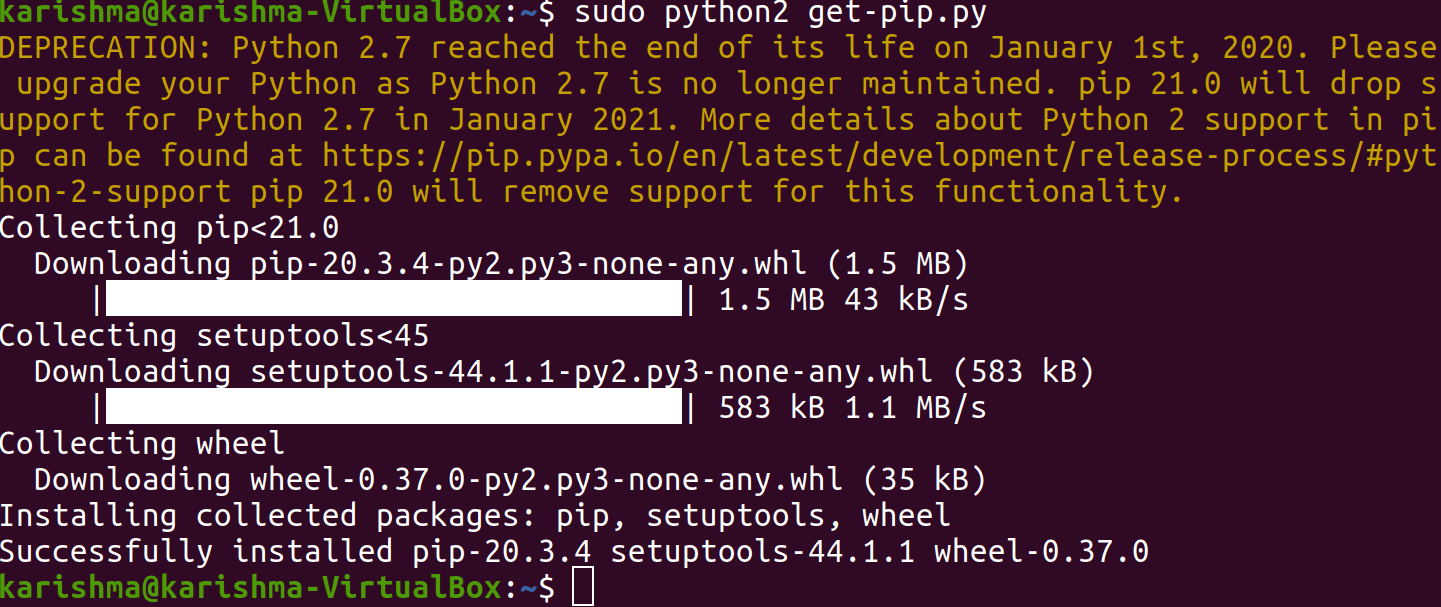

We are giving you exclusive deals to try Linux Servers for free with 100$ credit, check these links to claim your 100$,ĭigitalOcean - 100$ free credit & Linode - 100$ free creditĪlso, check out DevOps Book You should read section. This completes our tutorial, feel free to send your suggestions or questions using the comment box below.
#INSTALL PIP UBUNTU HOW TO#
That's it, guys for our guide on how to install Python pip on Ubuntu & also on CentOS/RHEL. To remove a package, runĬommand to only download a package & not install it is,įor a complete list of options that can be used with the PIP command, run Where 'packages.txt' is the file with a list of all the packages.

Then run the following command to install all the packages, To install a number of packages, we can create a file & mention all the packages we need to have to install ed on our system. To install a package using PIP, use the following command, We will now discuss some of the commonly used PIP commands for package management. This will install PIP on our Linux machines along with the required dependencies. & then use the script to install PIP on the machine, with this command, For this method, we will download a script using the following command, We can also install PIP on most of the Linux distributions including Ubuntu, CentOS using this method. This will install PIP along with all the required dependencies on the Ubuntu machines. It is use to install and manage additional packages that are not available in the.
#INSTALL PIP UBUNTU UPDATE#
$ sudo apt-get update & sudo apt-get upgrade -y The Pip is a standard package manager for Python programming language. sudo apt update To install pip3 run the command: sudo apt install python3-pip The command installs pip3 and all the Python libraries and dependencies. To start off, update the package lists as shown. To install PIP on Ubuntu machines, execute the following commands, Pip3 can be installed on Ubuntu using the APT package manager. Use the appropriate links among the following based on your OS to install EPEL repository,Īfter this step, run the following command in your terminal to install PIP,įor Ubuntu, we don't need to install any repository as PIP is available with the default Ubuntu repository. To install PIP on CentOS machines, we need to have the EPEL repository installed on our machines. (Also read: Using yum to download packages without installing them ) sudo apt install python3-pip Verify the installation by running the following command. In your terminal, use the following command to install Pip 3. This is the most straightforward method, and it is recommended. (Recommended Read: Brief & Simple guide to install SLACK on Ubuntu ) The first method of installing Pip on Ubuntu Linux is to use the APT package manager. In this tutorial, we will discuss how we can install PIP on our CentOS & Ubuntu machines. Many of the packages can also be found at PyPI (Python Package Index). Using PIP, we can install, uninstall the python based packages along with their required dependencies. PIP is a package manager for python-based software, PIP actually is a recursive acronym for 'PIP installs python' or 'PIP install packages'.


 0 kommentar(er)
0 kommentar(er)
